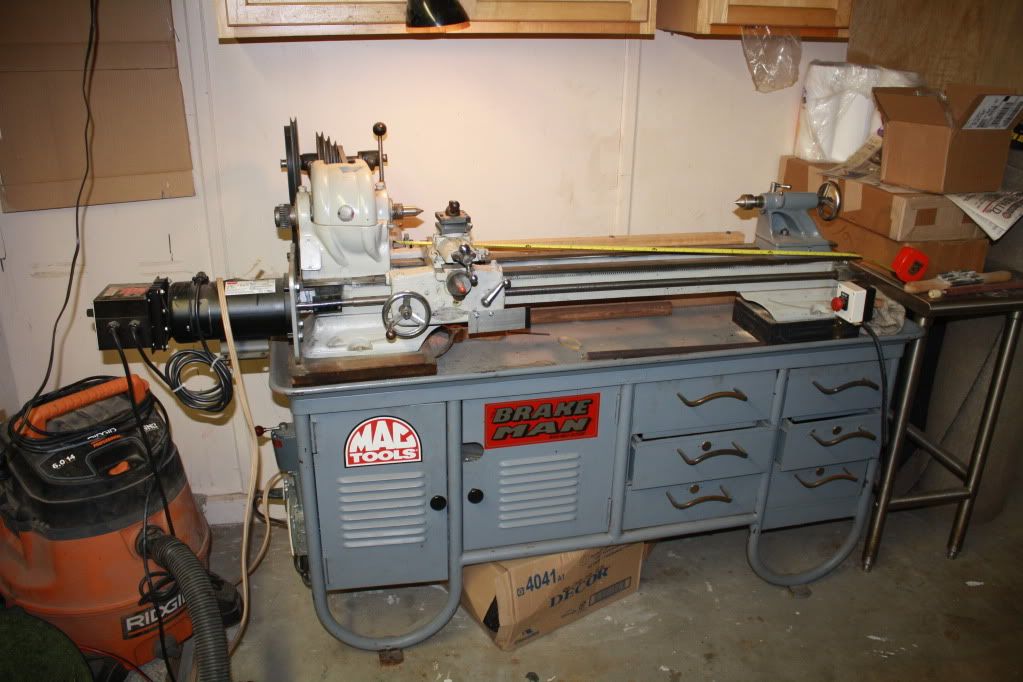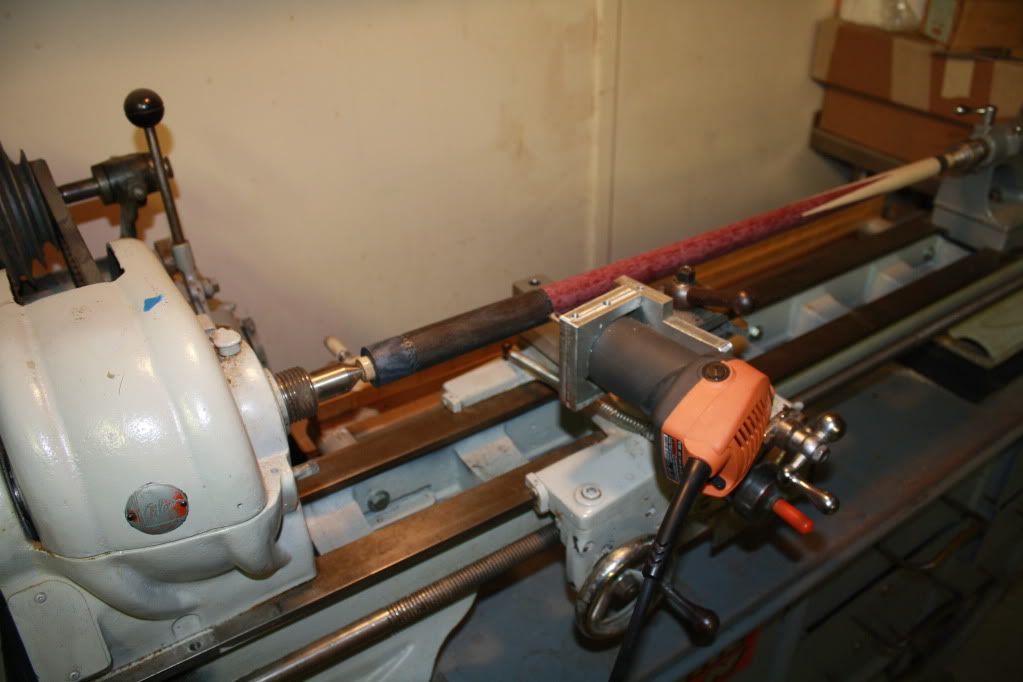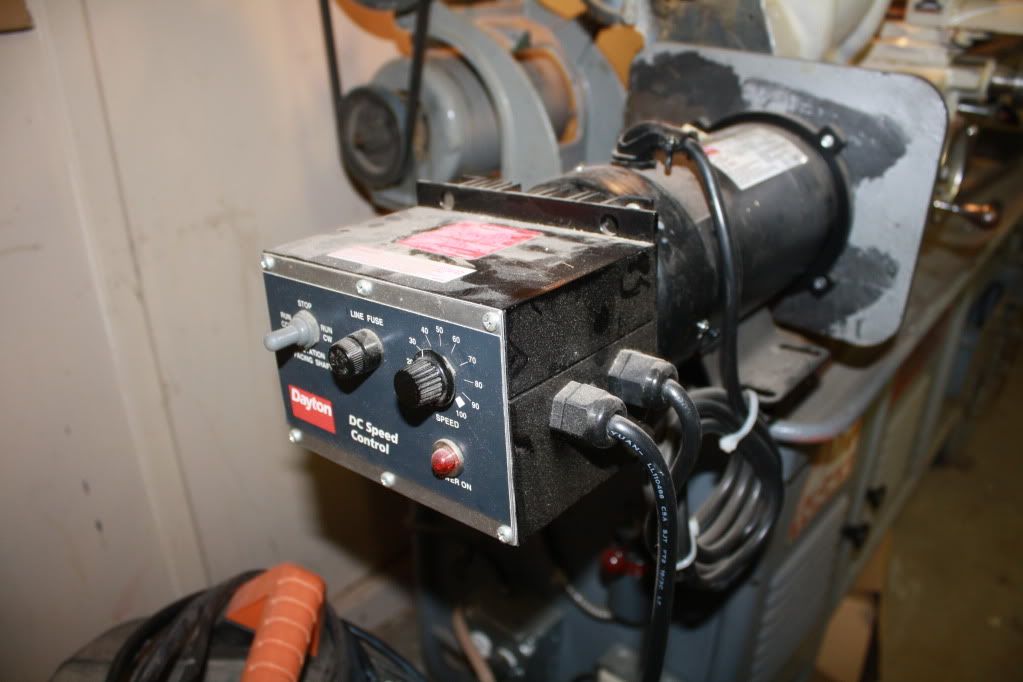Hey fellas,
I'm about to buy my first pool table and I was browsing the forum to read reviews when I found this thread.
It just so happens that I am a doctoral candidate in high energy physics, but before that I paid my way though my undergraduate studies, bought my house and will soon buy my billiard table

D) with money I earned running my own machine shop.
I began by buying old machine tools and restoring them. I read every text I could find on the subject and I had the privelege of working with and learning from a handful of retired Navy master machinists and millwrights. Among other things, I learned about metrology and scraping bearing surfaces.
Eventually, I was able to start my own shop and I fulfilled contracts for several gov't run research labratories making UHV parts and hardware for particle accelerators ($$$). I also did a lot of welding, machining and general fabrication work for several local earth moving companies and did lots of job shop repairs for the ag industry. Most interesting and demanding were the gov't contracts, although the earth moving business were challenging because the work pieces were so HUGE!
Let me begin by providing a list of quality American manufacturers. These lathes are "super lathes" in that they can remove enormous amounts of metal in short times while holding the tolerances of a toolroom lathe. They are loaded with features and were built to last a lifetime. Understand that, in todays dollars, these machines ranged in cost from $60,000 up to $250,000)
Brands All were NOT created equal!
American Tool Works
Pacemaker lathes
Lodge and Shipley
PowerTurn lathes
LeBlond (a select number of models ... NOT the "Regals" which were a medium duty lathe)
Monarch 6XX series lathes
We're talking about machines that have a spindle capable of handling some 20,000 lbs of load or more and somewhere between 10 and 50 horsepower. Despite the monstrosity of these machines, they were accurate and delicate enough to do extremely fine work, as well.
Other quality lathes include Cincinnati, Axelson, Lehman, DSG, Reed and Prentice, probably others I can't remember.
There are also exceptionally high quality tool room lathes. Not quite as cool as the super lathes, but they can hold the same or better tolerances. The two most notable are:
Monarch 10EE
Hardinge HLV
Then there are the low duty, hobbyist and student machines. These were originally marketed to farmers, mechanics, and schools. They found there way into industry as beater lathes that would be used for the odd jobs that don't require much accuracy or power. These include:
Sheldon
Logan
Atlas (also made lathes for Sears Craftsman)
Clausing
SouthBend
etc
Some of those in that list are better than others - for instance, Sheldon, Clausing and Southbend were a cut above Logan and Logan a cut above Atlas.
Sadly, most of these you will never see new. Southbend disappeared for awhile but the remainders of the defunct company were bought by Grizzly and now there are SouthBend brand machines, although they are imports. Monarch is still around - kind of. Born and Koch ownes the rights to ATW and will provide parts for Pacemakers, but they don't make anything new and the parts they will sell you are $$$. LeBlond is still around, I think, but they don't make anything new, either so far as I know. Clausing is still making Colchesters as student lathes.
Nomenclature (Did I spell that right?)
There are no precise definitions when it comes to what manufacturers call their lathes. Typically, you can break them into four categories:
Toolroom, Engine, Production/Turret, Second Operation
The distinction between toolroom and engine is very hazy and the distinction between production and second operation also a little hazy. Toolroom lathes are basically engine lathes but with more features and an extended gear box. Typically, toolroom lathes are not found in sizes much over 12 or so inches. It's hazy because some of the super lathes (like my three Pacemakers) have extended gear boxes, specialty quadrants allowing for diametral, module and metric threads and taper attachments and they can hold incredibly tight tolerances even under enormous loads. That seems to make them toolroom lathes but the smallest one is 14 by 30 and weighs 8000 lbs. It has automatic stops on the feed rod like a production lathe and is 15 hp.
Engine lathes are the stereotypical "standard" metal cutting lathe while production lathes are ones that are meant for speeding up the production of the same part. They may have turret tailstocks with several different tools (drills, reamers, diestocks, box tools, etc) and/or with a lever operated tailstock for rapid extension. They also have various automatic features and rapid traverse on the carriage and cross slide for larger machines. Second operation lathes typically have lever operated tailstocks or turrets and have much high speed spindles. They rarely have a leadscrew or feed rod. They are meant for finishing work - i.e. polishing and secondary operations after a part has been turned to size.
So what is a gunsmith's lathe? It's an import from China with substantially lower quality than a toolroom lathe that Grizzly has dubbed "gunsmiths lathe" in order to emphasize the fact that it has features a gunsmith will appreciate. Lehman called their lathes "oil field lathes" because they had a large through bore spindle, which was advantageous for the oil industry.
Measurements and the quality of a lathe
There is A LOT more to measuring the accuracy of a lathe than runout. In fact, a good machinist can work around spindle runout with one eye shut and both hands behind his back. Even crumby bearings from China can spec at 0.0005" TIR. This means nothing. (TIR = Total Indicated Runout)
What matters is how much load the bearing can take and (most importantly) the geometry and relationship of the bearing surfaces on the moving parts of the lathe! What determines the accuracy of a lathe is the relationship between the compound and the cross slide, the cross slide and the carriage, the saddle and the bed ways, and the bedways to the headstock/tailstock. These must all have the proper relationship through out the entirety of their motion and the geometry of the bearing surfaces must be such that we minimize stick-slip and wear while maximizing rigidity. This is where cheap imports ALWAYS fail. It's not the runout that matters.
If you take a little prussian blue and indicate some of the bearing surfaces, you'll find that only about 20% of the surface is in contact. Further investigation using measuring instruments and granite typically shows relationships that are out of whack.
The statement about the total runout on pin installations begs the question: How did you measure the TIR? I have a sprung three jaw chuck that measures 0.006" TIR at best and more typically 0.009" TIR. I can chuck a piece of steel in that and turn a journal - suppose I take 0.2" off the diameter. Then, when I put my DTI on the journal, I read a TIR of 0.0000 - meaning that I see no needle movement with my 0.0001" Interapid DTI. This is a meaningless measurement. If you are measuring runout while the part is in the lathe, what you are measuring is not the lathe's accuracy, but the rigidity of your setup and the relationship between the tool and the workpiece. To properly test the TIR after machining, you need a reference. For instance, if that part you machined was between centers, you would then remove the part from the lathe and move it to "test centers". These are benches with a dead center on either end and they have been carefully manufactured and calibrated to be in perfect alignment. Then you put your work piece between these test centers and measure the TIR. You will be surprised by what you find. Even high quality lathes don't turn a perfectly round work piece!
Just a note about old machine tools ... if you want to be a machinist, don't worry about technical service and parts availability. You've got a machine shop for cripes sake. If a part fails, machine a replacement! I've always believed that if I am going to use a piece of technology, it is my moral obligation to fully understand how it works. If I can't repair it, I don't use it. My computer is old because I understand how it work and I can repair it. I don't buy new gadgets because I don't want to waste the time learning how to use them. Etc.

This is just my opinion and I'm not saying it's the right way ... just sayin'
Finally, for making cues ... yeah pretty much any metal lathe is going to get the job done. Even the most dimensionally stable woods like jatoba are going to change with heat, humidity, etc. I will posit that the best billiards player in the world wouldn't be able to notice a couple of thousandths of an inch difference in one way or another.
Reference-
The lathes that I have owned and/or restored and/or run for substantial amounts of time are the following:
Lehman - flatbelt drive approximately 22" by 144"
ATW Pacemakers - ranging from 1943 to 1964 and from 14" up to 18"
Monarch CK - 12" lathe
Old Enco lathe - belt drive ... maybe 10 or 12" swing and roughly 3' between centers
Atlas - 10" (Atlas lathes are infamous for crumby Zamac castings... I repaired several)
Clausing - 5904 and 5914
Monarch 10EE - 10" toolroom lathe ... wish I owned one...
Victor - 16" lathe from the early 90's
Reed and Prentice - Approximately 16"
SouthBend 9A
SouthBend 10K
Cincinnati TrayTop - 13" by 34" IIRC ... decent lathe. Had to make a new thread dial and gear for that one
MSC - 18" lathe. Late 90's POS from Taiwan
Harrison - Maybe 14 by 30 or so? English made toolroom lathe with impressive gear box selection, although a number of gears were stripped due to previous abuse

A lot of work cutting new gears for that one.
Sheldon - 10" dial headstock lathe. Neat machine ... wouldn't mind having one!
Logan - 9", found under the hood of a '34 Buick in a field. Buddy restored it... not a bad hobby lathe.
My current "pride and joy" machines:
1943 16 by 30 Pacemaker Lathe - History unknown
1945 16 by 30 Pacemaker Lathe with taper attachment and accessory quadrants - Purchase by the Navy and retired to the National Industrial Reserve at the end of the war before ever being uncrated. In 1974 it was purchased by a community college where it remained seldom used because the instructors were afraid a student would hurt him or herself on the beast. It then landed in my shop.
1964 14 by 30 Pacemaker Lathe - Retired from Fisher Body Works and is the heaviest of all three of the Pacemakers
1930's era John Bertram and Sons 26" Shaper - History unknown; full restoration project in process
1940's era Avey 24" drill press
1952 Kearney Trecker 2D Die Sinking Mill - History unknown
1974 Kearney Trecker 2D Die Sinking Mill - History unknown
1940's era Milwaukee 2CH Vertical Mill - History unknown; full restoration project in proccess
1927 Footburt and Hammond Knuckle Drill - History unknwon
2011 Miller Syncrowave 350 - Bought new !





